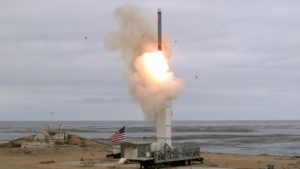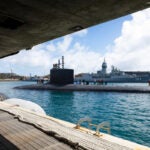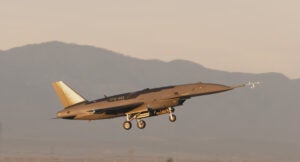
The Defense Department on Sunday conducted the first flight test of a ground-launched cruise missile with a range greater than 500 km after the Intermediate-Range Nuclear Force Treaty (INF) expired earlier this month. On Aug. 18 at 2:30pm at San Nicolas Island, Calif. the Pentagon launched a Tomahawk cruise missile from its ground mobile launcher and hit a target over 500 km away. DoD underscored this was a conventionally-configured missile and not meant to be armed with a nuclear warhead.…

 By
By 











